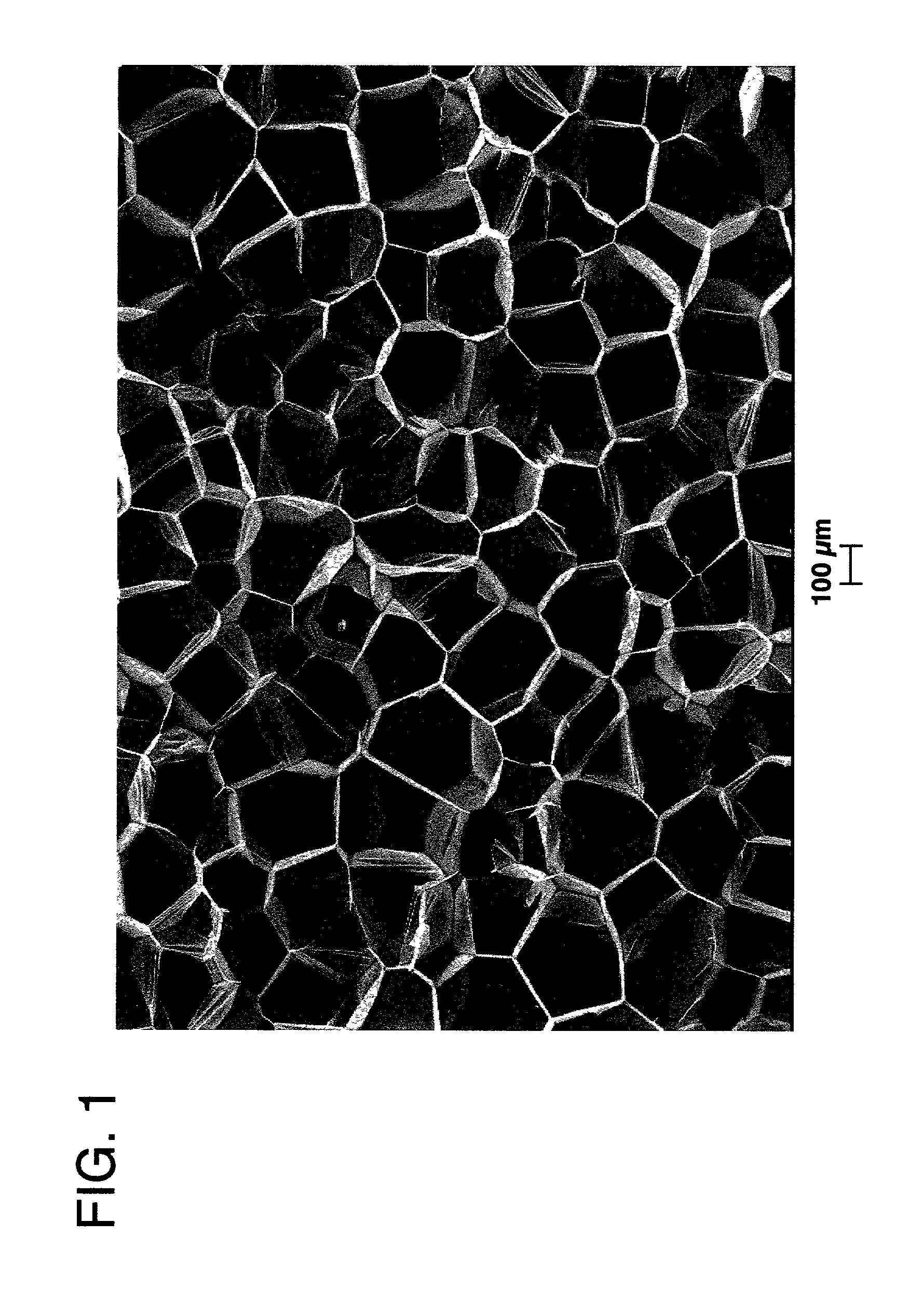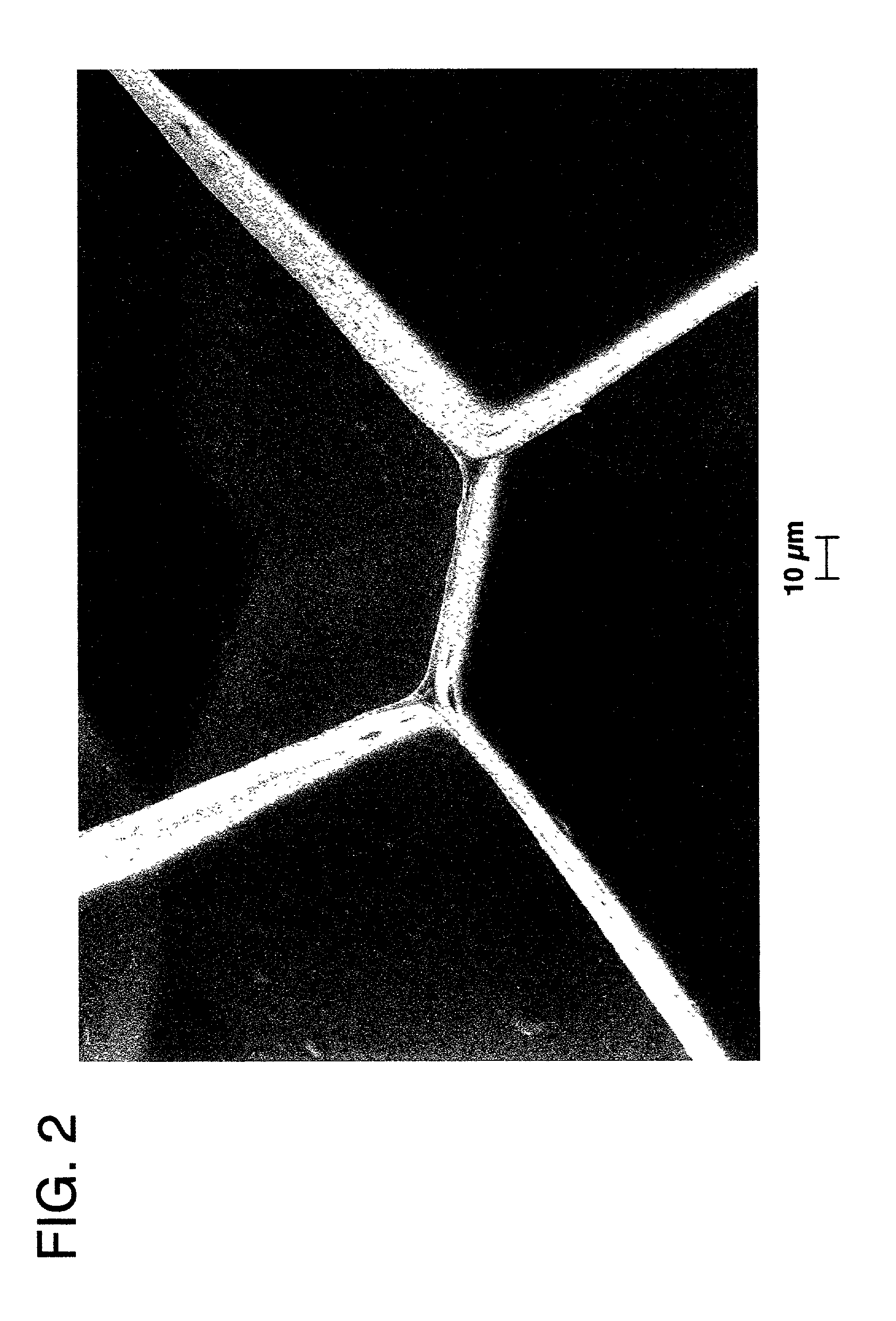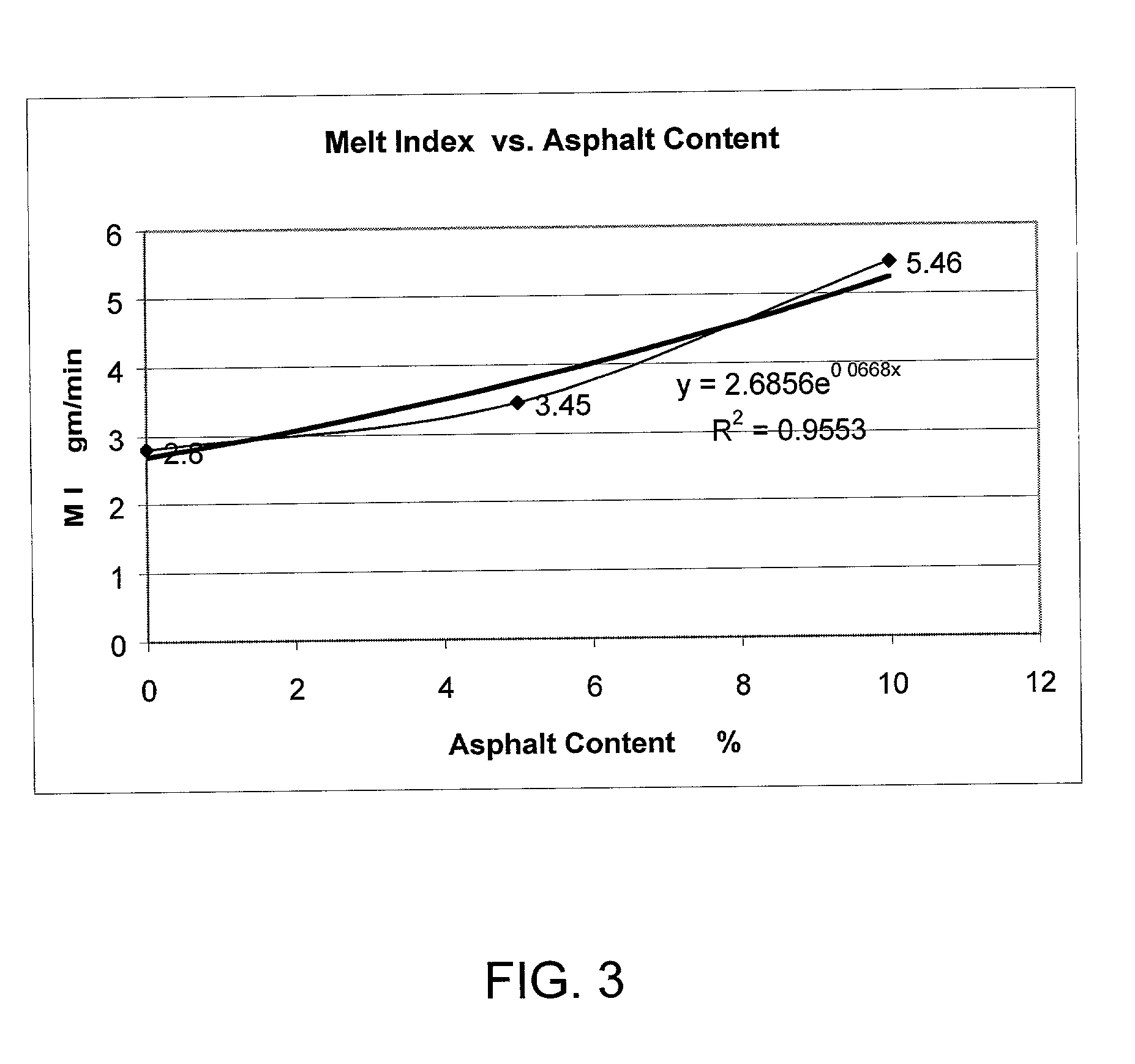Asphalt filled polymer foam
a polymer foam and foam filling technology, applied in the field of rigid foamed polymeric boards, can solve the problems of increasing the total reducing the thermal conductivity of the carbon black-filled one, and difficult to evenly disperse into the polymer without a process aid, so as to reduce the initial and aged thermal conductivity, improve the thermal insulation, and increase the thermal resistance. the effect of r valu
- Summary
- Abstract
- Description
- Claims
- Application Information
AI Technical Summary
Benefits of technology
Problems solved by technology
Method used
Image
Examples
examples
[0040] The invention is further illustrated by the following examples in which all foam boards were 1.5" in thickness, and all R-values were 180 day aged R-value, unless otherwise indicated. In the following examples and control examples, rigid polystyrene foam boards were prepared by a twin screw LMP extruder with a flat die and shaper plate. Vacuum was applied in the extrusion processes.
[0041] Table 2, a summary of Table 3, shows the process conditions for examples and control example without asphalt additive in a twin-screw extruder. Asphalt used was Trumbull #3706 granulated asphalt (Owens Corning) which is formulated from petroleum-based materials processed to have a high softening point, around 240.degree. F. (ASTM D-36). The polystyrene resins used were 70% polystyrene having a melt index of 3 and the 30% polystyrene, having a melt index of 18.8 (both from DelTech, with molecular weight, Mw about 250,000). The composite melt index was around 7.8 in compound. Stabilized hexabr...
PUM
| Property | Measurement | Unit |
|---|---|---|
| softening point | aaaaa | aaaaa |
| temperature | aaaaa | aaaaa |
| mean particle diameter | aaaaa | aaaaa |
Abstract
Description
Claims
Application Information
 Login to View More
Login to View More - R&D
- Intellectual Property
- Life Sciences
- Materials
- Tech Scout
- Unparalleled Data Quality
- Higher Quality Content
- 60% Fewer Hallucinations
Browse by: Latest US Patents, China's latest patents, Technical Efficacy Thesaurus, Application Domain, Technology Topic, Popular Technical Reports.
© 2025 PatSnap. All rights reserved.Legal|Privacy policy|Modern Slavery Act Transparency Statement|Sitemap|About US| Contact US: help@patsnap.com



